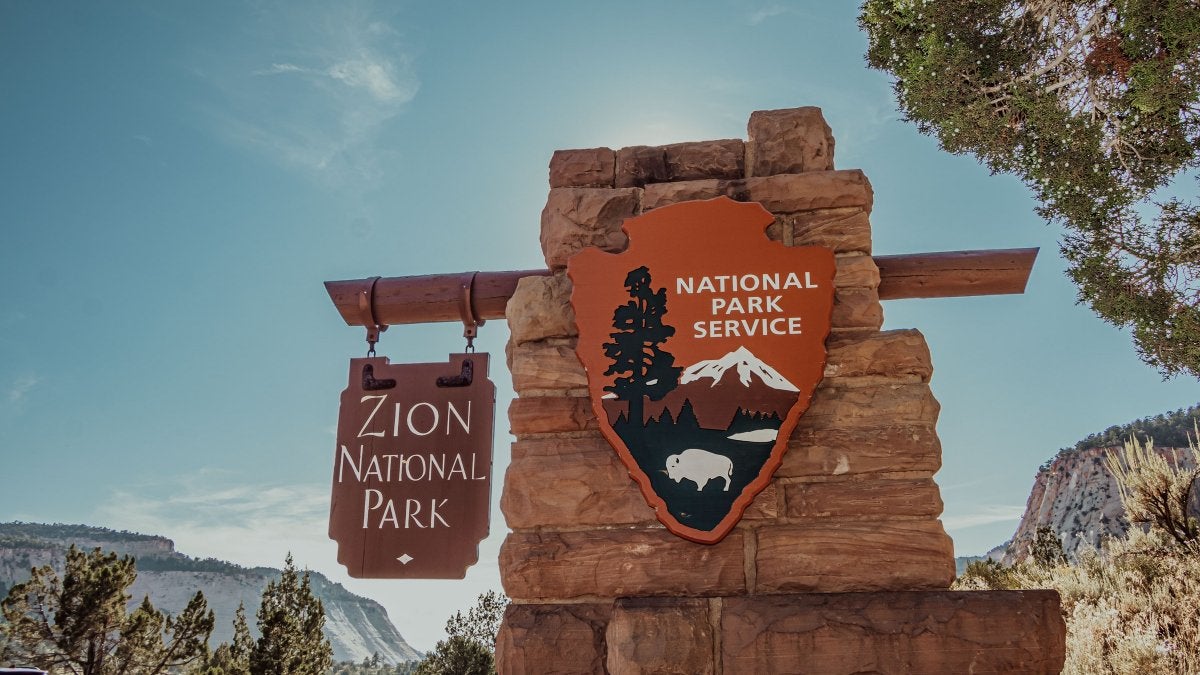No products in the cart.
Outdoor Adventure
NPS Is Leading the Electric Vehicle Revolution
In February, park officials announced that Zion National Park would receive a $33 million grant from the U.S. Department of Transportation to replace its aging, 21-year-old fleet of shuttle buses with 26 electric shuttles and 27 charging stations. The move came just as new Transportation Secretary, Pete Buttigieg, was confirmed, and it promises to be one of many monumental efforts to electrify the 645,000-plus government vehicles, an aggressive benchmark set by President Biden to help get the country to net-zero emissions by 2050.
“The federal government owns an enormous fleet of vehicles, which we’re going to replace with clean electric vehicles made right here in America, by American workers,” said Biden in early 2021.
The vehicles at Zion will be among the first in the National Park Service to get an electric makeover, said Amanda Rowland, Public Information Officer for Zion, in a statement to Outside. “It will be several years until they are operating because of the time it takes to order and build new electric buses and charging stations.”
Not only will the new buses be carbon-efficient (the park estimates a 192 metric ton CO2 reduction annually), they will also benefit wildlife and radically improve the visitor experience, simply by making less noise. “The new buses will be very quiet,” said Rowland. “Right now, you can hear the buses from trails in the park, including Angels Landing. The improvements in soundscapes should be noticeable to park visitors, birds, and other wildlife in Zion Canyon.”
This isn’t the first time the Park Service has been on the cutting edge of implementing green technologies. In 2017, Yosemite became the first U.S. national park to permanently add two zero-emission buses to its shuttles after purchasing the vehicles from the manufacturer Proterra. Nearby, the Yosemite Area Regional Transport System (YARTS) was awarded $4.3 million in federal funds at the end of 2019 to ramp up their electric vehicle arsenal with the purchase of six new electric coaches. YARTS is a critical transportation provider in the area, offering travel between Merced, Fresno, Mammoth Lakes, Tuolumne Meadows, and the Yosemite Valley.
According to Will Shafroth, President and CEO of the National Park Foundation, this continued investment in innovative solutions to reduce environmental impacts “is central to the agency’s long-term vision for sustainable management of park operations, including park transportation.”
Glacier National Park is gunning for a green transformation, too. The park’s iconic red buses, originally manufactured between 1936 and 1939, recently underwent a rehabilitation that replaced the old Ford engines with a Ford 6.2L V8 engine assisted by an electric hybrid system to reduce emissions and fuel consumption on the many downhill stretches of Going to the Sun Road. A spokesperson for Glacier told Outside that the new buses were slated to hit the pavement in 2020, but, due to the pandemic, they are now hoping to launch in summer of 2021.
It’s not only large vehicles that are being overhauled at the parks. In 2017, BMW, in partnership with the National Park Foundation, NPS, and the Department of Energy donated 100 electric vehicle charging stations specifically targeted at making the parks and their gateway communities more accessible to plug-in-driving visitors. Notable additions include Everglades, Death Valley, Grand Canyon, and Mount Rainier. “Electric vehicle drivers can now enjoy a quintessential national park road trip,” said Shafroth. “Not only will drivers benefit, but also the businesses and communities at the doorstep of our treasured parks.” Add in Biden’s plan to have 500,000 charging stations available across the country by 2030, and a climate-friendly road trip suddenly doesn’t sound so niche.
With the consumer market trending electric—California has banned sales of new gasoline cars by 2035, General Motors vowed to sell only zero-emission vehicles by 2035, and Ford announced it will sell only battery-powered cars in Europe by 2030—it’s certainly heartening to see U.S. national parks taking a leadership role when it comes to electrifying federal fleets. However, to truly take America into the sustainable future, Biden’s team will need to ensure that renewable energy production, not archaic relics like coal and natural gas, is powering the half-million charging stations he hopes to install.
Still, there’s a lot to cheer about in 2021. Namely that the new Secretary of Transportation, Buttigieg, is making big moves at the federal level to combat global warming by lowering emissions, pushing for high-speed railways, and increasing access to EV charging stations for historically underserved groups, like apartment dwellers and those in rural communities. The Department of Transportation is offering $180 million in grants for low- and zero-emissions buses and $889 million in grants to fund transportation projects with an explicit focus on addressing climate change and racial equity.
Or, as “Secretary Pete” put it: “To meet the climate crisis, we must put millions of new electric vehicles on America’s roads. It’s time to build public charging infrastructure powered by clean energy and make it available in all parts of this country.”
Lead Photo: Photo by Danika Perkinson on Unsplash

